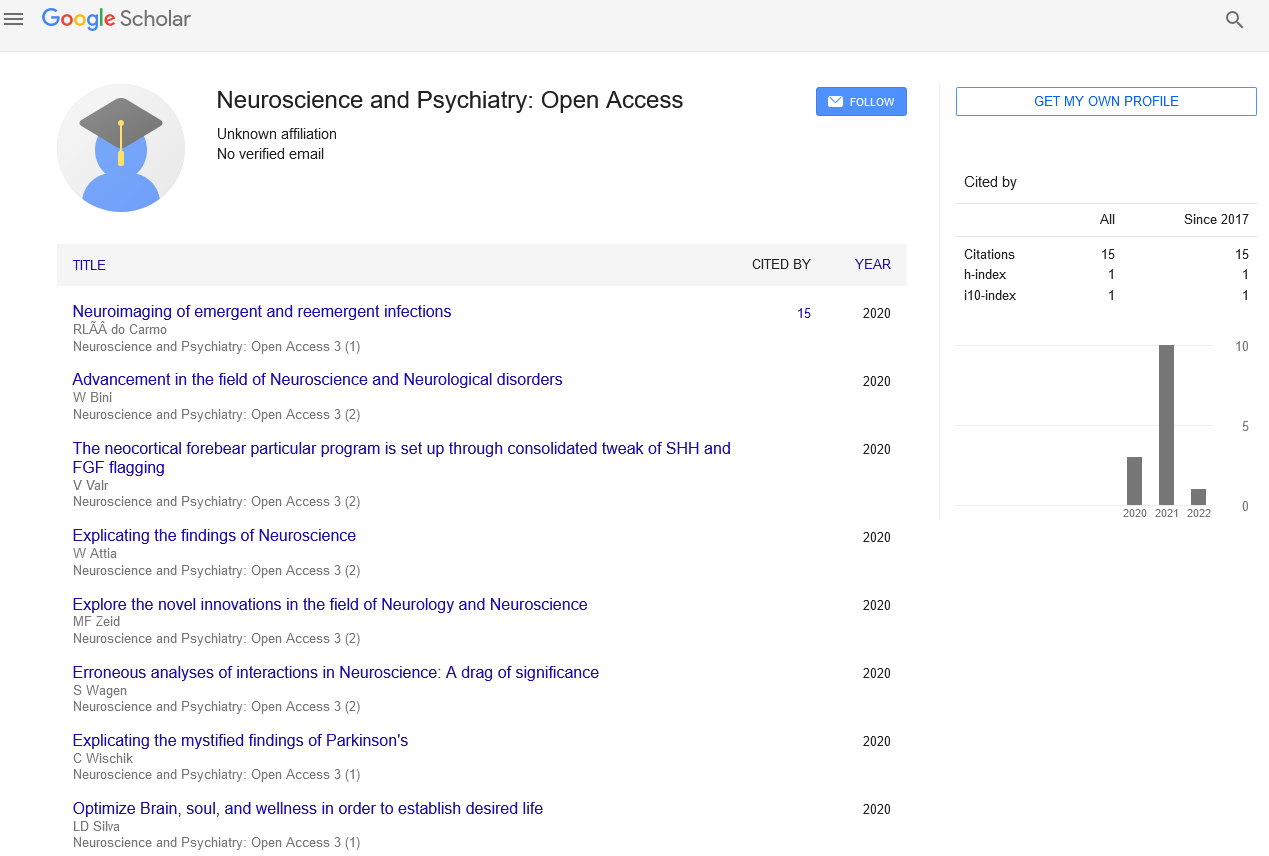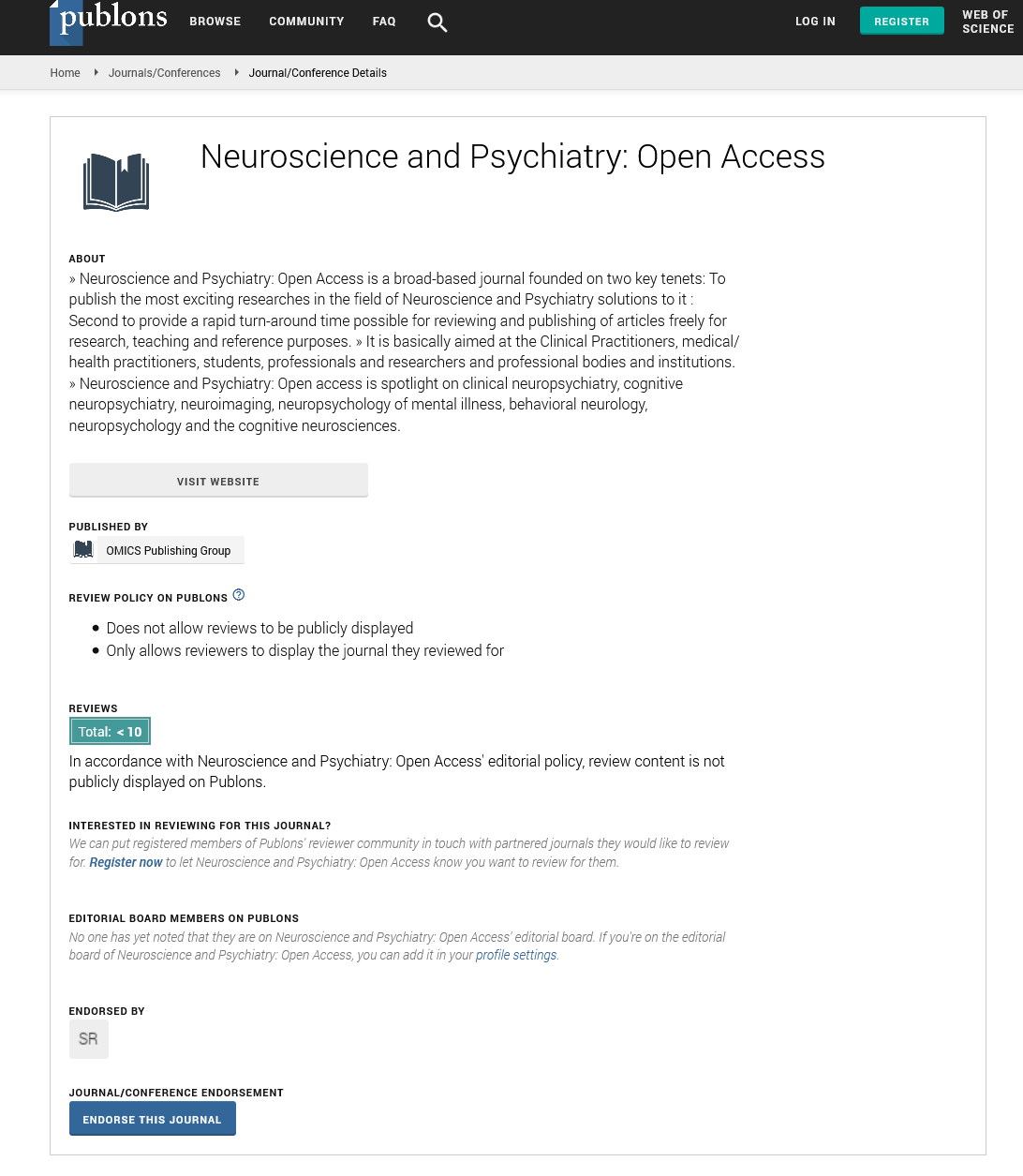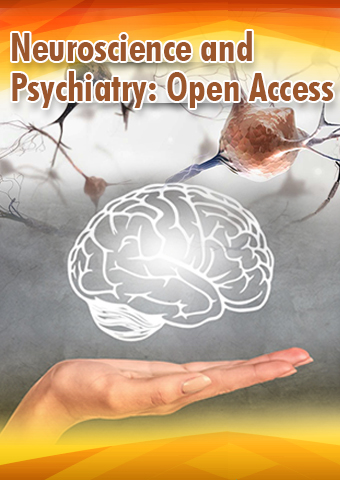Perspective - Neuroscience and Psychiatry: Open Access (2024) Volume 7, Issue 3
Unraveling the Intricacies of Neural Circuits: Insights from Neuroscience and Psychiatry
- Corresponding Author:
- Yu-Tao Xiang
Department of Physiology, University of Hong Kong, Hong Kong, China
E-mail: Xyut4@gmail.com
Received: 20-04-2024, Manuscript No. NPOA-24-133885; Editor assigned: 24-04-2024, PreQC No. NPOA-24-133885 (PQ); Reviewed: 08-05-2024, QC No. NPOA-24-133885; Revised: 17-05-2024, Manuscript No. NPOA-24-133885 (R); Published: 24-05-2024, DOI: 10.47532/npoa.2024.7(3).222-223
Introduction
Neural circuits serve as the fundamental building blocks of brain function, orchestrating complex networks of interconnected neurons that underlie cognition, emotion, behavior, and sensory processing. In this comprehensive exploration, we delve into the intricacies of neural circuits, exploring their structural organization, functional dynamics, role in psychiatric disorders, therapeutic interventions, and implications for understanding the human brain within the realms of neuroscience and psychiatry.
Description
The architecture of neural circuits: From synapses to networks
At the microscale, neural circuits comprise intricate arrangements of synapses, dendrites, axons, and neurotransmitter systems that facilitate communication between neurons. Synaptic transmission, governed by neurotransmitters such as dopamine, serotonin, glutamate, and Gamma-Aminobutyric Acid (GABA), modulates neuronal excitability, synaptic plasticity, and information processing within neural circuits.
Macroscopically, neural circuits form interconnected pathways and brain regions that coordinate sensory inputs, motor outputs, cognitive functions, and emotional responses. Hierarchical organization, functional specialization, and distributed processing characterize neural circuitry, with distinct circuits dedicated to sensory perception, motor coordination, memory encoding, executive control, and emotional regulation.
Functional dynamics of neural circuits: From encoding to integration
Neural circuits exhibit dynamic activity patterns that encode sensory stimuli, encode memories, orchestrate motor actions, and regulate emotional states. Electrophysiological techniques, such as Electroencephalography (EEG), Magnetoencephalography (MEG), and single-unit recordings, capture neural oscillations, synchrony, and firing patterns that reflect circuit level computations and information integration.
Coordinated activity within neural circuits gives rise to emergent properties, such as synchronized oscillations in gamma frequency bands during cognitive tasks, phase amplitude coupling during memory encoding, and neural entrainment in response to external stimuli. These dynamic signatures provide insights into neural coding principles, information processing mechanisms, and functional connectivity within and across brain regions.
Neural circuits in psychiatric disorders: Insights from pathophysiology
Dysregulation of neural circuits underlies the pathophysiology of psychiatric disorders, including schizophrenia, mood disorders, anxiety disorders, and substance use disorders. Neurotransmitter imbalances, altered synaptic connectivity, disrupted circuitry dynamics, and aberrant neuroplasticity contribute to symptom expression, cognitive impairments, and emotional dysregulation observed in these disorders.
For instance, in schizophrenia, aberrant dopamine signaling in mesolimbic and mesocortical pathways disrupts reward processing, cognitive control, and salience attribution, leading to positive symptoms (e.g., hallucinations, delusions) and negative symptoms (e.g., anhedonia, social withdrawal). Mood disorders, such as major depressive disorder and bipolar disorder, involve dysregulation of serotonin, norepinephrine, and glutamate systems, impacting mood regulation, stress responsiveness, and emotional processing within limbic circuits.
Therapeutic interventions targeting neural circuits: From psychopharmacology to brain stimulation
Psychiatric treatments aim to modulate neural circuits and restore functional connectivity through pharmacological interventions, psychotherapy, brain stimulation techniques, and lifestyle interventions. Psychotropic medications, including antidepressants, antipsychotics, anxiolytics, and mood stabilizers, target neurotransmitter systems to alleviate symptoms, rebalance circuitry dynamics, and promote neural plasticity.
Psychotherapeutic modalities, such as Cognitive Behavioral Therapy (CBT), Dialectical Behavior Therapy (DBT), and mindfulness- based interventions, promote adaptive neural rewiring, emotion regulation skills, and cognitive restructuring within neural circuits implicated in psychiatric disorders. Brain stimulation techniques, such as Transcranial Magnetic Stimulation (TMS), Electroconvulsive Therapy (ECT), and Deep Brain Stimulation (DBS), modulate neural activity, normalize circuitry function, and enhance treatment response in treatment resistant cases.
Emerging trends in neural circuit research: Neuroplasticity, connectivity, and computational neuroscience
Advancements in neural circuit research encompass neuroplasticity mechanisms, connectomics mapping, and computational modeling approaches that elucidate circuit level adaptations, network dynamics, and information processing principles in health and disease. Neuroplasticity mechanisms, including synaptic potentiation, synaptic pruning, and adult neurogenesis, underlie learning, memory, and recovery processes within neural circuits.
Connectomics studies employ Diffusion Tensor Imaging (DTI), functional connectivity analyses, and graph theory to map structural and functional connectivity patterns across the brain, revealing modular organization, hub regions, and network motifs that support integrated information processing. Computational neuroscience models, such as neural network simulations, predictive algorithms, and machine learning techniques, bridge neural circuitry with behavior, cognition, and clinical outcomes, informing personalized interventions and predictive biomarkers.
Implications for understanding the human brain: Integrative approaches and collaborative endeavors
Understanding neural circuits is central to deciphering the complexities of the human brain, consciousness, and mental life. Integrative approaches that combine neuroimaging, electrophysiology, genetics, behavioral assays, and computational modeling provide comprehensive insights into neural circuit function, dysfunction, and plasticity across the lifespan and in response to environmental influences.
Collaborative endeavors across disciplines, including neuroscience, psychiatry, psychology, engineering, and computational biology, foster innovation, knowledge exchange, and translational applications that advance neural circuit research from bench to bedside. Open science initiatives, data sharing platforms, and collaborative consortia promote reproducibility, data transparency, and rigorous scientific inquiry, shaping the future of neural circuitry research and its impact on human health and well-being.
Conclusion
In conclusion, neural circuits represent the intricate matrix through which the mind’s operations, from perception to cognition to emotion, unfold. By unraveling the complexities of neural circuitry, neuroscience and psychiatry converge to illuminate the underpinnings of brain function, mental disorders, and therapeutic interventions. As we navigate the neural landscape, interdisciplinary collaborations, technological innovations, and a deeper understanding of circuit-level dynamics propel us towards transformative discoveries, personalized treatments, and a holistic understanding of the human brain’s inner workings.


